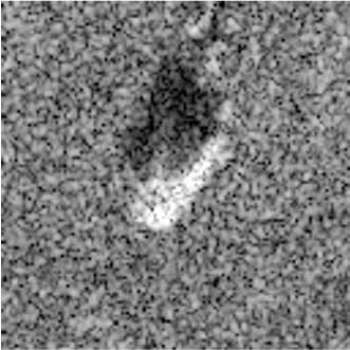Using a Generative Adversarial Network to Reduce Speckle in Radar Imagery

Researchers at Lincoln Laboratory and MIT Computer Science and Artificial Intelligence Lab (CSAIL) have developed a novel machine learning method for reducing speckle in synthetic aperture radar (SAR) images. Speckle, the granular "spotting" inherent in SAR imagery, inhibits analysts' ability to interpret an image. Reducing the ambiguities caused by speckle would improve the high-resolution, broad-area imaging needed for applications such as environmental monitoring, ocean spill assessments, agricultural and land use observations, terrain mapping, and ground surveillance.
Background
Air- or space-borne SAR is desirable for earth surveillance applications because it is unconstrained by cloud cover, precipitation, fog, or nighttime darkness. Around the clock, SAR can provide images for monitoring oil spills, assessing ground conditions, tracking wildfire movement, and detecting military vehicle movements.
Problem
SAR produces images that are degraded by speckle, a "salt-and-pepper" effect created by the diffuse reflections from the broad area SAR is scanning. "Despeckling" SAR images allows analysts to accurately interpret an imaged scene. Various methods have been investigated for despeckling, and recently, deep learning, via convolutional neural networks (CNNs), has been applied to filtering out speckle. While supervised CNN methods can refine speckle-ridden (i.e., noisy) SAR images, they require copious labeled data on which to train the CNN model, and unsupervised learning (relying on CNNs to generate models on unlabeled data) has not produced superior results.
Solution
Our technique uses a GAN enabling a selfsupervised learning approach to despeckling SAR imagery. A GAN learns the patterns in unstructured input data (e.g., pixel arrangements in a photo) and generates a replica of the original data (photo), which the GAN then classifies as real or fake on the basis of learned patterns. The generate/classify process iterates until the self-correcting GAN satisfactorily generates a plausible replica.
The GAN approach can avoid limitations of CNN-based strategies that compare a pair of clean & noisy or noisy & noisy images to identify speckle. Both comparisons are limited by the availability of appropriate images. Instead of comparing pairs, our method smooths an image using a CNN modeled on statistical noise characteristics and subtracts the clean outputs of this despeckling CNN from the noisy image. This method circumvents lengthy training on copious, often hard-to-acquire, data.
Benefits
- Applies a generative adversarial network (GAN) approach to mitigate the granular artifacts (noise) in SAR images
- Targets speckle to be removed through a comparison of residual data after smoothing to a well-known statistical noise model instead of a comparison of image pairs (clean vs noisy image or noisy vs noisy image)
- Demonstrates improved smoothing performance, i.e., higher smoothing that retains sharp edges without requiring clean "truth" images
Additional Resources
Patent pending, US20220138911A1
More Information
M. Newey and P. Sharma, "Self-supervised Speckle Reduction GAN for Synthetic Aperture Radar," in 2021 IEEE Radar Conference, published online 18 June 2021.
